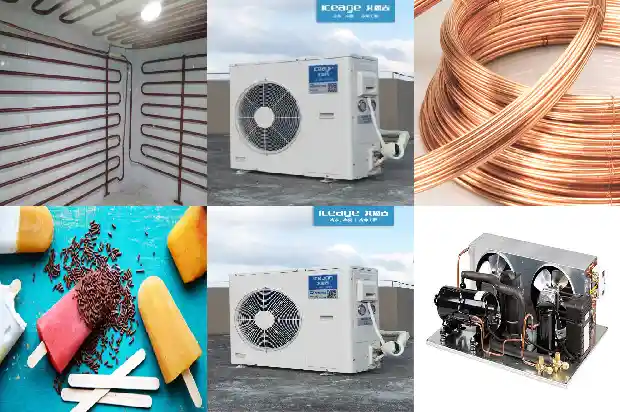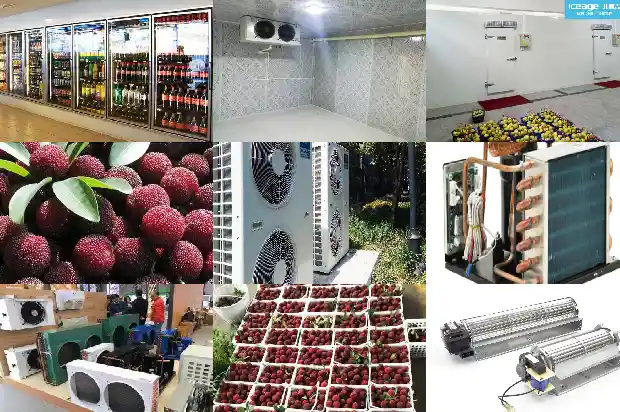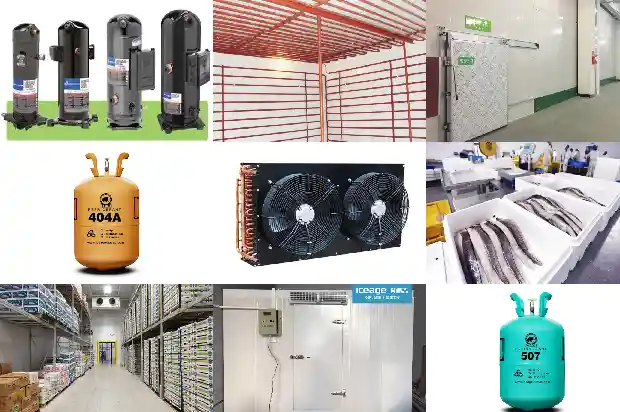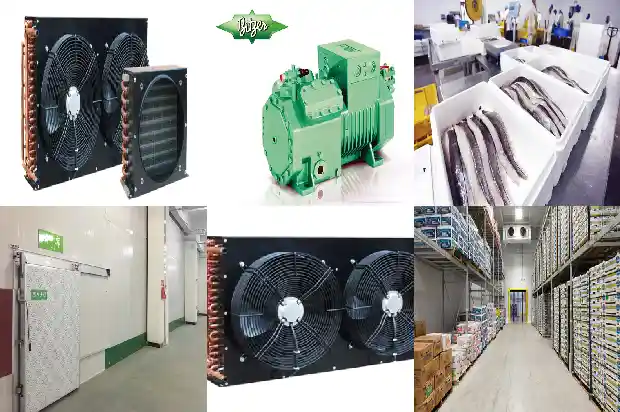What Are the Reasons Why the Temperature in the Quick-freezing Cold Storage Cannot Be Lowered?
2025-04-09
I. Fault Analysis and Treatment of the Inability to Lower the Temperature in the Cold Storage
The temperature in the cold storage is too high. After inspection, it is found that the temperatures of the two storage rooms are only -4°C to 0°C, and the liquid supply solenoid valves of the two storage rooms are in the open state.
Therefore, readjust the upper and lower limits of the low-pressure controller. After adjustment, the values are: 0.05—0.12MPa, and the corresponding evaporation temperature range is about -20°C to 18°C. After that, restart the system, and the operation returns to normal.
II. Faults of the Refrigeration System - Frost on the Evaporator Coils
The frost on the evaporator coils generally should not exceed 3mm.
III. Insufficient Refrigerant in the System
In the device with a liquid receiver, due to the regulating effect of the liquid receiver, unless the refrigerant is seriously insufficient, which causes the liquid supplied from the liquid receiver to the liquid pipe to be discontinuous, thus affecting the normal operation of the device, the general "insufficient refrigerant", that is, the low liquid level, will not have an obvious impact on the operation of the system. However, in the device without a liquid receiver, since the amount of refrigerant in the system directly determines the level of the refrigerant liquid in the condenser, and thus affects the operation of the condenser and the subcooling degree of the liquid refrigerant, when the amount of refrigerant in the system is insufficient, the following changes in the operating conditions of the device will inevitably occur:
(1) The compressor keeps running, but the temperature in the storage room cannot be lowered;
(2) The discharge pressure of the compressor drops;
(3) The suction pressure of the compressor is relatively low, the suction superheat increases, the frost at the rear of the evaporator melts, and the cylinder head of the compressor gets hot;
(4) A large number of bubbles can be seen in the center of the liquid flow in the liquid supply indicator;
(5) The liquid level in the condenser is obviously low.
The temperature in the cold storage is too high. After inspection, it is found that the temperatures of the two storage rooms are only -4°C to 0°C, and the liquid supply solenoid valves of the two storage rooms are in the open state.


Therefore, readjust the upper and lower limits of the low-pressure controller. After adjustment, the values are: 0.05—0.12MPa, and the corresponding evaporation temperature range is about -20°C to 18°C. After that, restart the system, and the operation returns to normal.
II. Faults of the Refrigeration System - Frost on the Evaporator Coils
The frost on the evaporator coils generally should not exceed 3mm.


III. Insufficient Refrigerant in the System
In the device with a liquid receiver, due to the regulating effect of the liquid receiver, unless the refrigerant is seriously insufficient, which causes the liquid supplied from the liquid receiver to the liquid pipe to be discontinuous, thus affecting the normal operation of the device, the general "insufficient refrigerant", that is, the low liquid level, will not have an obvious impact on the operation of the system. However, in the device without a liquid receiver, since the amount of refrigerant in the system directly determines the level of the refrigerant liquid in the condenser, and thus affects the operation of the condenser and the subcooling degree of the liquid refrigerant, when the amount of refrigerant in the system is insufficient, the following changes in the operating conditions of the device will inevitably occur:
(1) The compressor keeps running, but the temperature in the storage room cannot be lowered;
(2) The discharge pressure of the compressor drops;
(3) The suction pressure of the compressor is relatively low, the suction superheat increases, the frost at the rear of the evaporator melts, and the cylinder head of the compressor gets hot;
(4) A large number of bubbles can be seen in the center of the liquid flow in the liquid supply indicator;
(5) The liquid level in the condenser is obviously low.
Related Articles
- Is the Compressor in the Cold Storage Overheating in Summer? Find the Reasons Here!
- Reasons and Hazards of Liquid Hammer in Refrigeration Compressors
- What are the Reasons and Hazards of Uneven Liquid Distribution in the Refrigeration System?
- Reasons for the Poor Refrigeration Effect of the Cold Storage
- Frosting in the Cold Storage? A Detailed Explanation of the 9 Reasons for Frosting of Air Coolers and 4 Defrosting Methods~~
- These Are the Nine Reasons for the Low-pressure Fault! Haven't You Mastered Them Yet?
- Is the Compressor of the Cold Storage Unit Overheating? Find the Reasons Here!
- A Detailed Analysis of the Nine Reasons for the Low Pressure in the Refrigeration System!
- Reasons for Compressor Oil Deterioration and Oil - adding Operations
- What Are the Common Reasons for Difficulties in Cooling a Cold Storage?
- Analysis of Seven Reasons for Ice Formation in Computer Room Air Conditioners
- Reasons for Frost Formation in Cold Storage and Defrosting Methods
- What Are the Reasons for Insufficient Air Output of Screw Air Compressors?
- Reasons for Pump Body Failures in Cold Storage Compressors
- What are the reasons for the inactivity of the automotive air conditioning compressor? What are the common faults?
- What are the reasons for the frequent start-up and tripping of the refrigerated air dryer in the cold storage?
- Reasons and Solutions for High and Low Condensing Pressure in Air-cooled and Water-cooled Systems
- 15 Reasons for Excessive Temperature Rise of Motors
